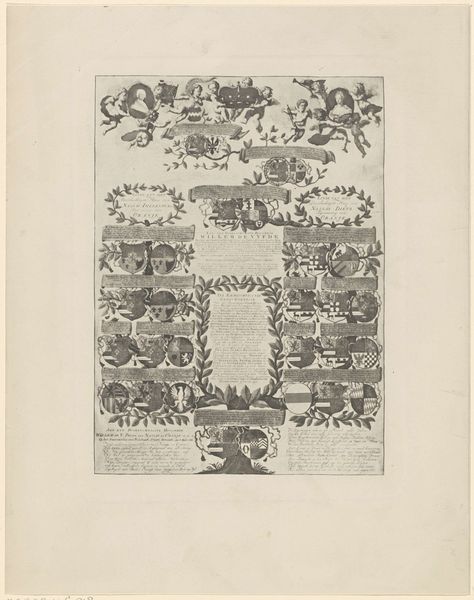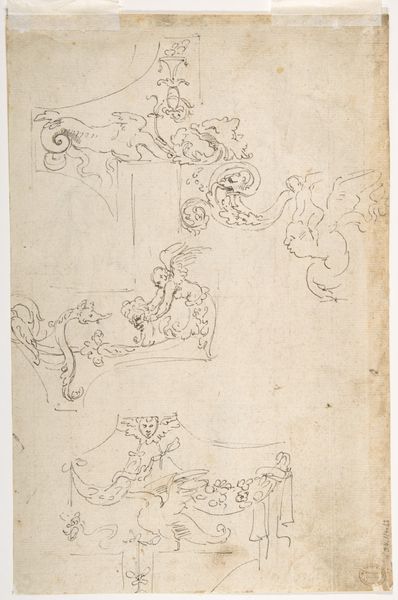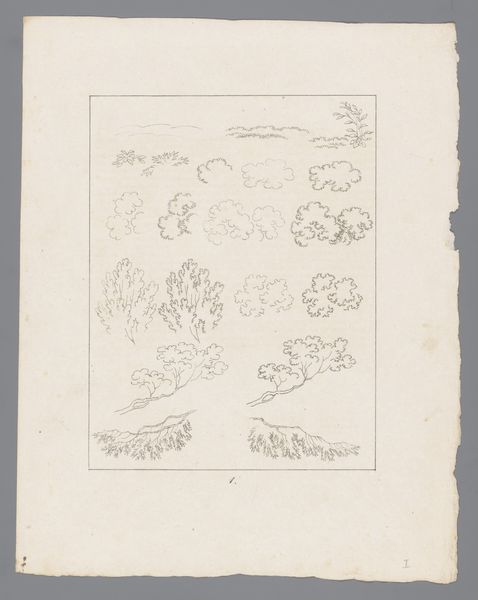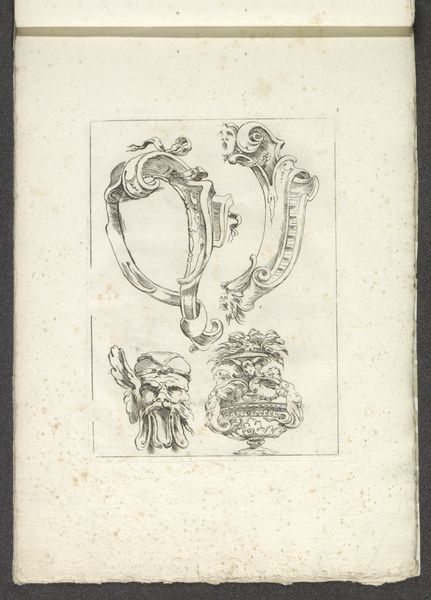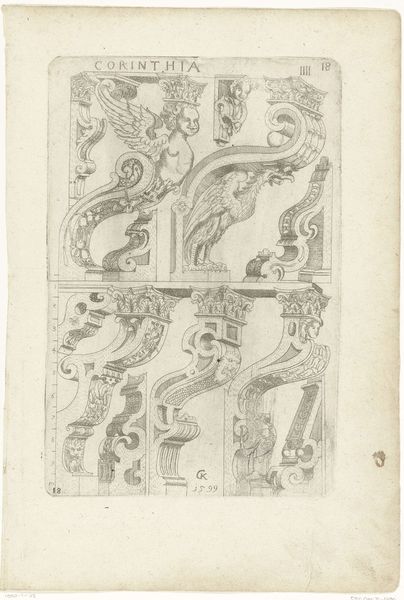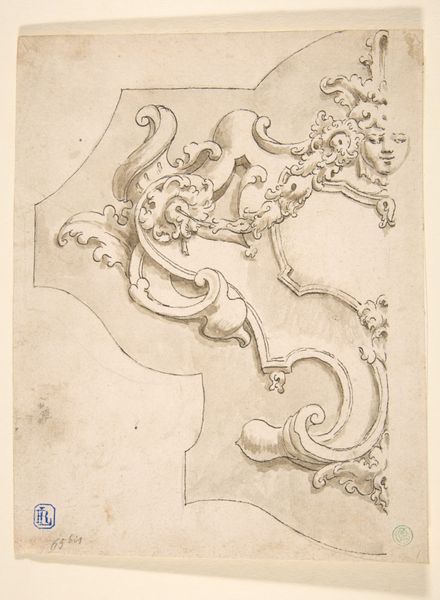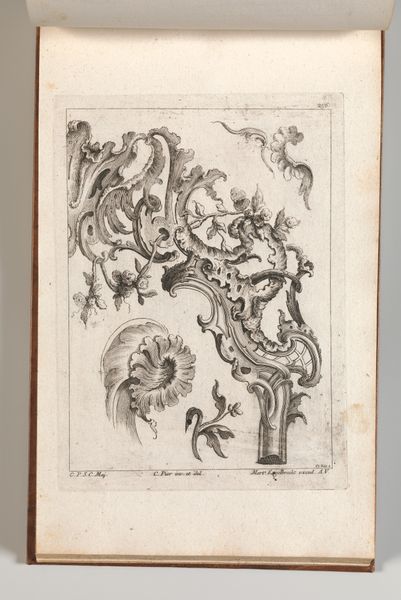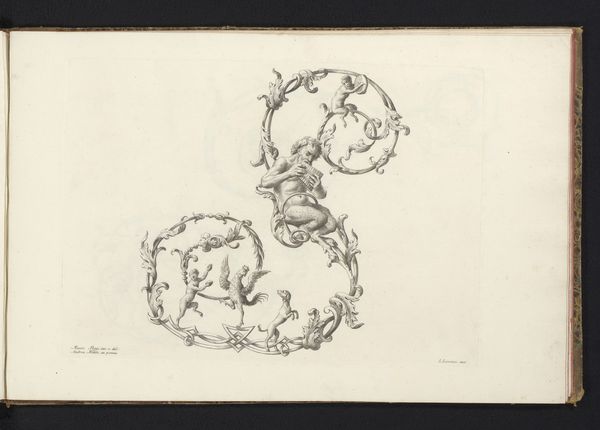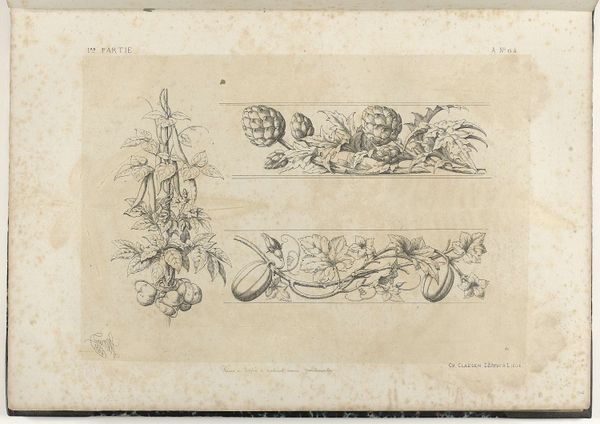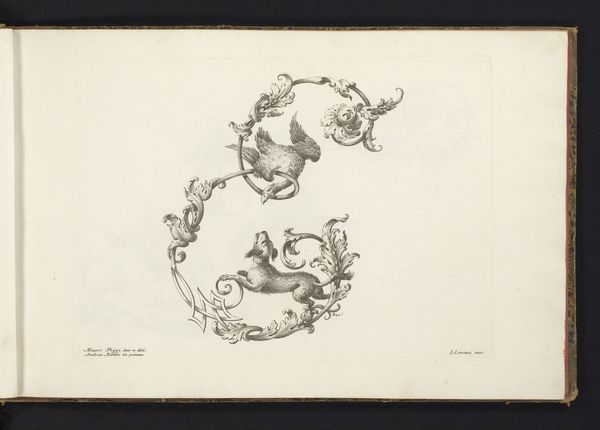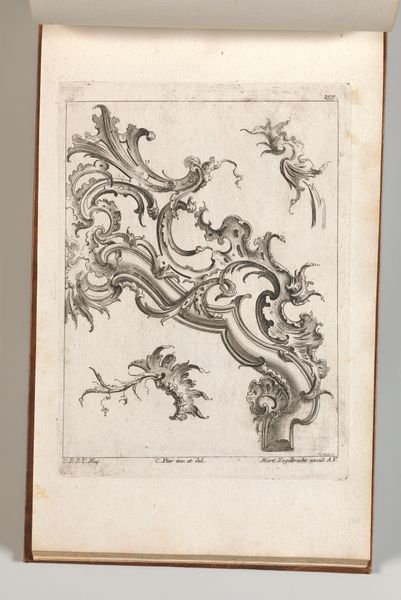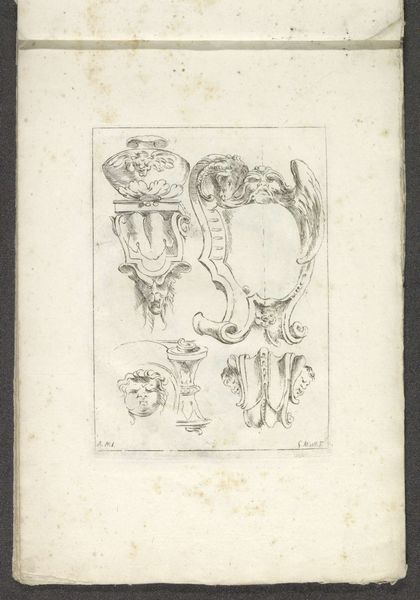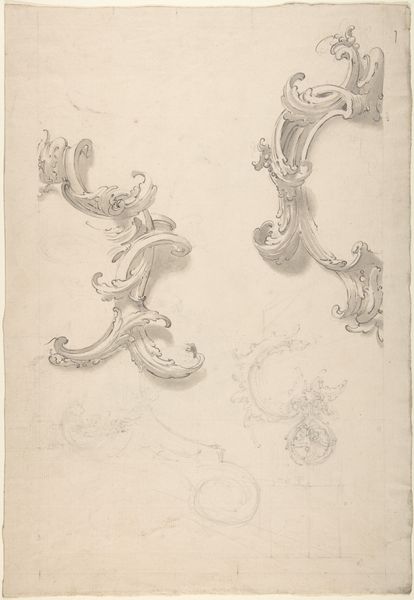
drawing, ornament, print, paper, pen
#
drawing
#
ornament
# print
#
paper
#
pen
#
academic-art
#
decorative-art
#
calligraphy
Dimensions: 7 13/16 x 5 3/16 in. (19.9 x 13.2 cm)
Copyright: Public Domain
Curator: Looking at this pen and ink drawing, titled "Various Ornamental Designs," which dates roughly to sometime between 1800 and 1900, I am struck by the interplay of elegance and function that’s present in the detailed configurations. Editor: My immediate impression is that it feels quite classical and somewhat cold; like preparatory drawings for something that wants to be grand, yet feels constrained by its two-dimensional state. The stark contrast, due to the pen on paper medium, makes the ornate motifs seem more detached than if they were, say, sculpted. Curator: It's interesting that you note the feeling of detachment. Indeed, considering the historical context, decorative arts during that period were increasingly separated from their direct social functions through industrial reproduction and the rise of the middle class. This sheet could exemplify that tension, as a display of technique without a definite application in mind. Editor: Absolutely, if we examine these swirling lines closely—the precise execution, the calculated repetitions, the way light and shadow are articulated—it's apparent that the artistry lies in the draftsmanship itself. There's an intricate formalism at play, a study in visual rhythm. Curator: It makes me consider the role of institutions such as the Metropolitan Museum of Art where it resides, because the work itself signifies not merely ornamentation but a sort of historical archive—a compendium of styles available for appropriation by designers or artists operating in period-based aesthetic traditions. These types of specimens are useful to educate future artisans. Editor: Yes, it acts almost as a visual glossary, illustrating particular design elements emblematic of their eras. By decoding each component, from its swirling filigrees to its geometric balances, we glimpse the cultural narratives and period values woven into what might initially seem to be merely decorative forms. Curator: Exactly, and through studying compositions such as this, we not only appreciate the artistry of an anonymous draftsman but also engage with the complex, interconnected world of cultural and material history. Editor: It’s a compelling convergence of form and function, really. Studying these ornamental designs makes us conscious of the processes of abstraction and codification within artistic movements. They give one a sense of their context but still retain visual harmony and balance.
Comments
No comments
Be the first to comment and join the conversation on the ultimate creative platform.
